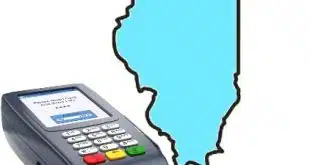Merchants and other businesses that accept checks are adopting electronic truncation?also known as remote deposit capture?so quickly that one expert observer expects the number of installed systems to more than double next year. Indeed, says Bob Meara, a senior analyst at Boston-based researcher Celent LLC, demand for remote capture is running so high that “vendors are literally running out of hardware. Banks are being told in many cases vendors can't fill their orders.” Meanwhile, major banks are now pushing remote capture, at least to their big treasury clients. “They're all aggressively selling it, and they weren't six months ago,” Meara says. Remote-capture vendors will have installed 106,000 seats by the end of the year, a number that will soar to almost 251,000 by the end of 2007, according to Meara's projections. Meara, who researched the remote-capture technology market for a recent Celent report, says the total installed base will cross the 1 million mark in 2011. Much of that growth, he says, will stem from the willingness of banks to sell the technology to smaller merchants and other corporate customers. “Eighteen months ago, few banks were even considering that [small-business] market,” Meara notes. Most banks were unsure of risks, he says, as well as the value proposition to smaller or single-location businesses. But now, “there's clear evidence these solutions are going to go down market,” he says. Indeed, Meara says his projections may be conservative, since he excluded businesses doing $1 million a year or less in revenue on the theory that most banks would shy away from these prospects, figuring they pose too much risk. “Banks will be slow to sell in that segment,” he says. With remote capture, retail businesses and other corporate offices that take checks as payment are able to turn the paper into electronic images, then transmit the images to their banks of first deposit. In this way, the corporate or retail location in essence becomes a branch of the bank but without direct bank oversight. As a result, even though the technology has grown rapidly in popularity, banks are still leery of deploying it with their smallest clients. “The risk is somewhat generic for the banks,” Meara says. “They're just a little bit nervous. It's non-trained, non-bank personnel making deposits.” Price competition could heat up as deployments grow. For now, Meara says, banks are largely calling on existing clients, rather than butting heads with other banks for remote-capture business. “There are not a lot of examples of deals being won or lost based on pricing yet,” he says. Fees vary widely, with per-item charges running to a maximum of a dime, he says. Deposit-ticket fees range from 50 cents to $3, and monthly maintenance fees are anywhere from $10 up to $60. Scanners, which may or may not be bundled into the deal, average $1,000 apiece, Meara says. Competition may also be affected by the entry of non-bank players, such as processors that have traditionally performed check-verification services, Meara says. And, he notes that back-office conversion (BOC), a new e-check application that will become available on the automated clearing house next March (Digital Transactions News, May 8), could open the market even more by increasing the utility of remote-capture software. “Every solution provider I've spoken to is writing BOC capability into their solution because they know the demand will be there next March,” he says.
Check Also
Has the CCCA Reached the End of the Road?
With the odds against the Credit Card Competition Act coming to a vote before the …





